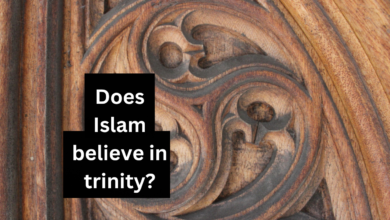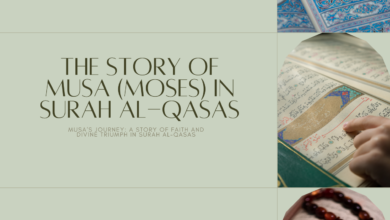
Who wrote the Hadith?
Hadith are the recorded sayings, actions, and approvals of Prophet Muhammad. They were compiled and written down by his companions, primarily in the centuries following his death.

Introduction
Hadith, the collection of sayings, actions, and approvals of Prophet Muhammad (peace be upon him), holds a significant place in Islamic tradition. These narrations provide guidance on various aspects of life, including religious practices, morality, and jurisprudence. But who wrote the Hadith, and how did this rich body of knowledge come into existence? This article delves into the history and processes involved in the compilation of Hadith.
Oral Transmission
During the time of Prophet Muhammad (peace be upon him), there was no organized effort to document his sayings and actions in a written form. Instead, the early Muslims relied on oral transmission to preserve these teachings. Companions of the Prophet, known as Sahabah, played a crucial role in memorizing and transmitting Hadith to the next generation. This initial stage was critical in ensuring the accuracy and authenticity of the Hadith.
Companions and Their Efforts
The Sahabah, being close companions of the Prophet, had the privilege of directly learning from him. They not only preserved the Hadith through memory but also conveyed these teachings to the wider Muslim community. Prominent companions like Abu Bakr, Umar ibn al-Khattab, and Aisha (may Allah be pleased with them) are among those who transmitted a substantial number of Hadith. Their reliability and trustworthiness were well-established, making their narrations highly regarded.
Also Check
- Which Hadith do Sunnis follow?
- Why is Friday important for Muslims?
- Patience of prophet Muhammad (PBUH)
- What is Hadith?
- Where are the 25 Prophets of Islam in order?
The First Compilation Efforts
After the passing of Prophet Muhammad (peace be upon him) in 632 CE, the need to systematically collect and document his sayings and actions became apparent. The first compilation efforts were initiated by individual companions. For example, Abu Bakr (may Allah be pleased with him) commissioned Zaid ibn Thabit to collect the Quranic revelations into a single manuscript. However, the Hadith compilation process was not as systematic at this stage.
The Role of Caliphs and Early Scholars
It was during the caliphate of Umar ibn al-Khattab (may Allah be pleased with him) that more structured efforts were made to collect and document Hadith. Umar appointed committees of scholars to compile Hadith, recognizing the importance of preserving the teachings of the Prophet. These committees gathered Hadith from various sources, including the Sahabah and early Muslims.
The Work of Imam Bukhari and Imam Muslim
While several scholars contributed to the compilation of Hadith, two names stand out for their exceptional efforts: Imam Bukhari (810-870 CE) and Imam Muslim (821-875 CE). They spent a considerable part of their lives meticulously sifting through Hadith to separate authentic narrations from unreliable ones. Their collections, known as Sahih al-Bukhari and Sahih Muslim, respectively, are considered among the most authentic sources of Hadith. They developed stringent criteria to ensure the reliability of narrations and included only those Hadith that met these criteria.
Classification of Hadith
To organize the vast body of Hadith, scholars developed a classification system. Hadith are categorized into various grades, such as Sahih (authentic), Hasan (good), and Da’if (weak), based on the chain of narrators and the content. This classification allows scholars and students to distinguish between reliable and less reliable narrations.
Conclusion
The Hadith, a vital source of guidance for Muslims, underwent a complex process of preservation and compilation. From the oral transmission by the companions of Prophet Muhammad (peace be upon him) to the meticulous work of scholars like Imam Bukhari and Imam Muslim, the Hadith tradition was carefully safeguarded. Today, Muslims continue to study and benefit from these narrations to deepen their understanding of Islam and lead righteous lives. The efforts of those who dedicated their lives to collecting and verifying Hadith ensure that the wisdom and teachings of Prophet Muhammad (peace be upon him) remain accessible for generations to come.

FAQs About Who Wrote the Hadith
What are Hadith, and who wrote them?
Hadith are the recorded sayings, actions, and approvals of Prophet Muhammad. They were compiled and written down by his companions, primarily in the centuries following his death.
Who were the primary authors of Hadith?
The primary authors of Hadith were the companions of Prophet Muhammad, known as the Sahaba. Notable companions who collected Hadith include Abu Huraira, Aisha, Umar ibn al-Khattab, and Abdullah ibn Abbas.
Did Prophet Muhammad himself write down the Hadith?
No, Prophet Muhammad did not personally write down the Hadith. He relied on his memory and oral transmission of his teachings to his companions. It was the companions who later documented the Hadith.
When were the Hadith first compiled in written form?
The compilation of Hadith began during the lifetime of Prophet Muhammad, but the systematic and comprehensive recording of Hadith started in the first century after his death. This process continued over several generations.
What were the motivations behind compiling the Hadith?
The primary motivation for compiling the Hadith was to preserve and transmit the teachings and actions of Prophet Muhammad accurately. This was essential for the practice of Islam and the interpretation of the Quran.
Did different companions collect Hadith separately?
Yes, different companions collected Hadith independently based on their interactions and experiences with Prophet Muhammad. This resulted in various collections of Hadith, some of which became more widely recognized than others.
Are there specific books or collections of Hadith that are highly regarded?
Yes, there are several highly regarded collections of Hadith, including Sahih al-Bukhari, Sahih Muslim, Sunan Abu Dawood, Sunan at-Tirmidhi, Sunan an-Nasa’i, and Sunan Ibn Majah. Sahih al-Bukhari and Sahih Muslim are often considered the most authentic.
How were the Hadith collections authenticated and classified?
Hadith collections were authenticated and classified based on a rigorous process of examining the reliability and integrity of the narrators (Isnad) and the content (Matn). Authentic Hadith were classified as Sahih (authentic), Hasan (good), or Da’if (weak).
Are there any Hadith collections that are not considered reliable?
Yes, there are some Hadith collections that are considered less reliable due to concerns about the authenticity of their narrators or content. Scholars have classified such collections as Da’if (weak) or even fabricated.
How should Muslims approach the Hadith in their religious practice and understanding?
Muslims consider the Hadith as an important source of guidance and interpretation of the Quran. They often seek the guidance of qualified scholars to understand and apply the Hadith in their daily lives. Sahih Hadith are given the highest authority in Islamic jurisprudence and theology.






